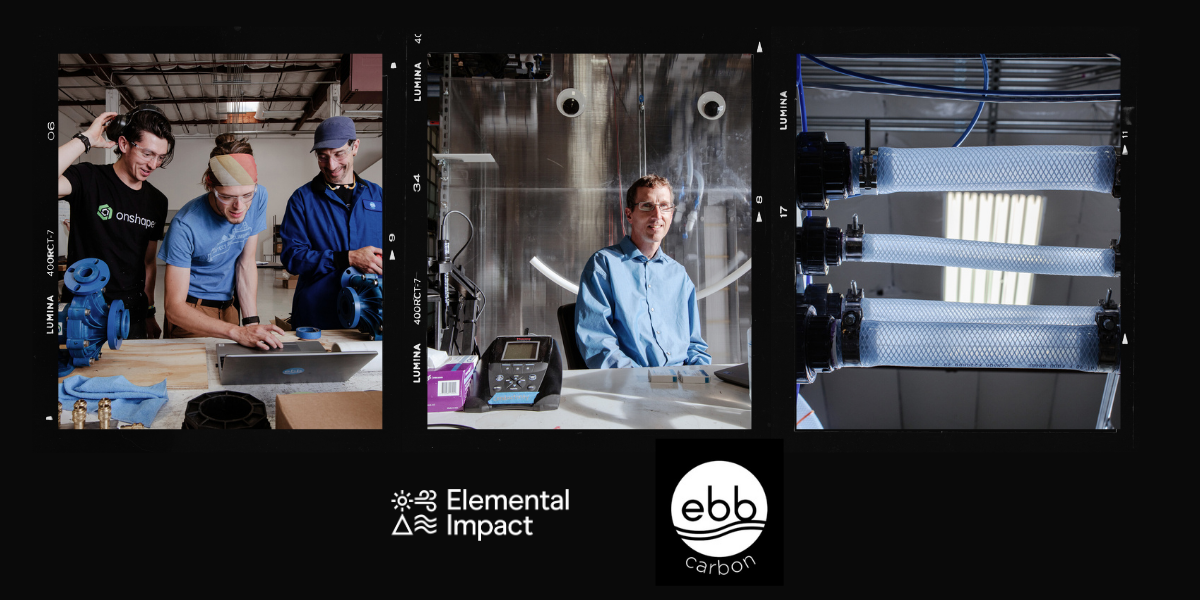
This article was originally published in Cipher on July 8, 2025. Illustration by Nadya Nickels.
Entrepreneurs are relentlessly innovating to make energy more reliable, help farmers face changing conditions and strengthen domestic supply chains for everything from critical minerals to solar panels. Their groundbreaking solutions can lower costs, create local jobs and make neighborhoods healthier.
Yet they face a key barrier: the “scale gap.” The scale gap is the investment and expertise shortfall that climate companies face on their path from first-of-a-kind and early-stage projects to widespread adoption and commercialization. Amid growing market uncertainty, a declining appetite for risk from investors is exacerbating the funding gap.
In collaboration with Boston Consulting Group, we’ve estimated the funding scale gap (also known as the “missing middle” or the “valley of death”) to be at least $150 billion.
In the climate space, innovation in technology — especially with the rise of artificial intelligence — has outpaced new ideas in finance. We need financial innovation: novel ways to invest in climate solutions that can bridge the scale gap and unlock essential technologies.
This is truer than ever in today’s rapidly shifting funding landscape. Investors with creative investment strategies will find pathways forward, despite policy uncertainty. This moment calls for targeted financial structures tailored to the specific risks, timelines and revenue models of emerging technologies to keep critical solutions on track and help companies get to bankability.
Elemental has invested in more than 150 projects over 15 years, including 14 recent first-of-a-kind facilities. Those projects included a critical mineral recycling plant in Ohio, an organic fertilizer plant co-located near farms in California and a next-generation geothermal energy facility in Utah. The companies that Elemental invests in are almost two-and-a-half times more likely to survive from early to late commercial stages than those without Elemental’s support, according to researchers from Vibrant Data Labs.
Through this experience, we have learned key lessons about designing financial innovation that helps companies navigate the scale gap.
Catalytic Capital
Tried and true financial instruments innovatively applied in new deal models can help investors align their economic interests with companies, mitigate risks and improve outcomes for stakeholders. Flexible funding is critical to helping entrepreneurs overcome early-stage project risks, preparing these technologies for commercial deployment and meeting the requirements of traditional investors.
Take the Simple Agreement for Future Equity (SAFE), a tool designed by startup accelerator and venture capital firm Y Combinator to help startups secure early-stage funding. Investors have been using this tool to fund early-stage companies since 2013.
Elemental adapted this instrument to provide development capital for first-of-a-kind and early commercial projects. Created in partnership with Wilson Sonsini Goodrich & Rosati, the Development SAFE (D-SAFE) is a novel, tailored funding mechanism designed to streamline development, including site control, permitting, front-end engineering, community engagement and offtake negotiations — all of which are often underfunded due to the particular risk of encountering obstacles at these early stages and the project not moving forward. Elemental’s goal is to get critical climate projects developed, de-risked and in the market as quickly as possible.
This is how it works:
- The funding directed to the parent company supports individual projects with capital tied to specific development milestones.
- Moreover, an innovative redemption feature — which allows the investment to either convert to equity in the parent company or function as debt, repaid to the investor on pre-arranged terms — gives the company the option of avoiding the ownership dilution that would otherwise occur with a traditional equity investment, say from a VC.
- This feature makes it more flexible for startups and lowers risk to the funder’s investment.
Elemental pairs the D-SAFE with specialized coaching and expertise — from local stakeholder engagement to engineering and procurement — that helps companies scale their business in local communities.
Take our partnership with Dimensional Energy, for example. This startup converts CO2 into sustainable aviation fuel and other green hydrocarbon products. In 2022, Dimensional was gearing up to build its first commercial-scale facility in upstate New York with Seneca Holdings. Through a D-SAFE, we provided early capital to help fund the company’s development activities, which were essential first steps in order for Dimensional to secure additional funding to build a facility that will abate 60,000 tons of CO2 annually once fully operational.
Investor Mobilization
To achieve large-scale impact, investors, ranging from banks and private equity firms to philanthropy and public funds, need to work together to unlock new financing solutions.
Philanthropic groups like The Rockefeller Foundation, Waverley Street Foundation and John D. and Catherine T. MacArthur Foundation (all of which back Elemental) tend to have a bigger appetite for risk, allowing the organizations they fund to be nimble and take chances to achieve their missions.
Our experience funding early-stage projects shows that bringing different kinds of investors and partners together to manage novel or complex risks helps projects succeed by leveraging shared expertise, extended networks and coordinated pools of capital.
For example, Elemental’s investment and strategic support helped Energy Dome, a long-duration energy storage company, expand into the U.S. last year. An introduction we made to a specialty insurance provider addressed a financing requirement that unlocked more than $30 million in capital from the U.S. Energy Department and Alliant Energy for Energy Dome’s first-of-a-kind commercial facility in Wisconsin.
Of course, rethinking and redesigning the investing landscape won’t happen overnight. The scale gap is vexing, but it is solvable. Across our investments, we see that this framework of catalytic capital paired with project expertise and investor mobilization can lead to real project deployments on the ground.




